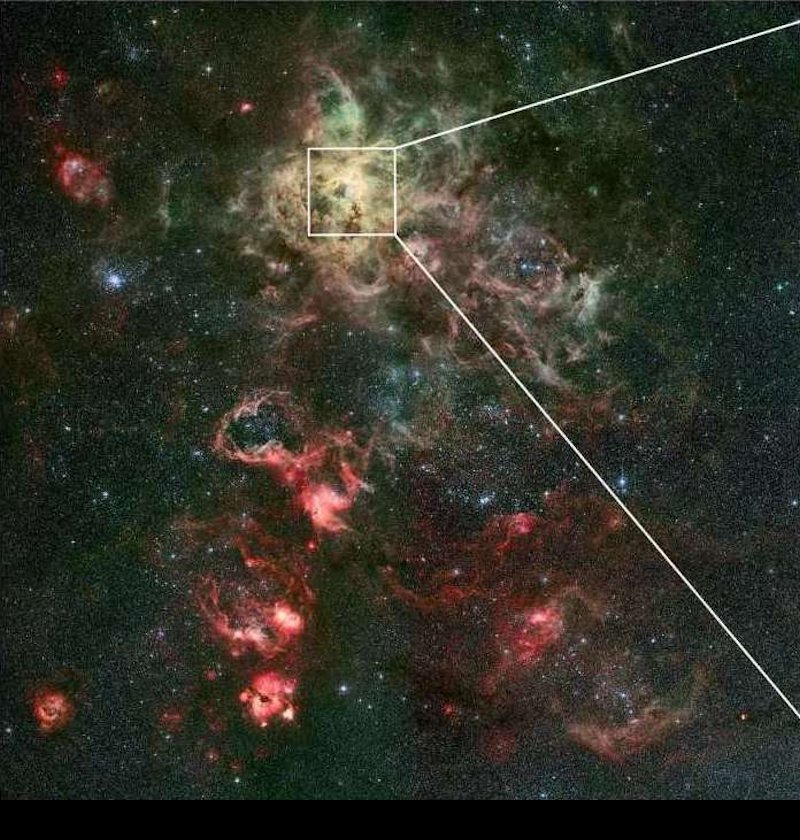DL MARTIN wrote: ↑Wed May 23, 2018 6:21 pm
I continue to be troubled by the failure to account for the 60 million year old aspect of the Antennae image. The dialogue that portrays the 100 million years of activity between the two galaxies as current events denies the archeological nature of the observation. Scientific rigor is lacking.
You may of course choose to be troubled by the fact that nothing can travel faster than light, and that light only travels at ~300,000 kilometers per second, and that the light from the Antennae galaxies that we can see in the sky right now displays a certain redshift, which allows us to infer that the light that we see was emitted by the Antennae galaxies some 60 million years ago.
You may, if you want to, also choose to be troubled by the fact that the Andromeda galaxy can be inferred to be two million light-years ago. It is not the redshift of the Andromeda galaxy that has led scientists to that conclusion (indeed, the Andromeda galaxy displays a blueshift), but rather it is the brightness of certain "standard candles" like Cepheid variables in the Andromeda galaxy that has told us how far away our sister galaxy is.
The fact that the light that reaches us from Andromeda is indeed some two million years old can of course be seen as troubling. What has happened to our sister galaxy in that two million year gap, between the time when the light we can see was emitted and the time that is "now"? Perhaps the Andromeda galaxy is no longer there? Perhaps it has exploded? Evaporated? Or perhaps it is already on our doorstep, but we won't know for another two million years?
And what about our own Sun? It is eight light-minutes away. It something happens to our Sun, we won't know until after eight minutes. Isn't that worrying?
No. None of this is worrying. Yes, our human lives are short, and the oldest recorded observations of the night sky are just a few thousand years old, but we do know enough about stars and galaxies to be able to say: Don't worry. The Sun is an ordinary star, it is a single star, it is not interacting with anything, and it is in the prime of its life. Yes, it is going to die, but not for a long time. It is still there, for the next eight minutes, and the next, and the next. And we do know that it has been shining on the Earth for some four and a half billion years already.
And the Andromeda galaxy is large and magnificent, and it is interacting somewhat with our own galaxy, but nothing catastrophic is about to happen to either of our galaxies for as long as humanity is likely to exist.
And the Antennae galaxies are interacting violently, and yes, if you could magically travel to them faster than light to see them up close right now - which you absolutely can't, since that is one of the most fundamental laws of physics - then you would see, indeed, that their appearance would have changed somewhat. Some of the brilliant blue stars in NGC 4038 would have exploded as supernovas, and others would have turned into red giants. And new brilliant clusters of stars may have begun to peek out of the thickest black dust of these galaxies. And the distorted shapes of the galaxies may have changed a bit more. But not by much.
We know that stars live for a long time. Most, but not all stars live longer than 60 million years. Most live for billions of years, and many - but not our own Sun - probably live for trillions of years. We also know that galaxies evolve slowly, because the Hubble Deep Field images have told us a lot about how galaxies change in size and shape over billions of years. We know that in most cases, 60 millions years is a tiny, tiny part of a galaxy's lifetime.
You may of course still worry about the fact that we don't know how the appearance of the Antennae galaxies has changed since the light that paint their faint images in the sky was emitted some 60 million years ago. It is up to you what you choose to worry about. Personally I choose to marvel at the fact that beings as tiny as brief as ourselves have managed to amass such an amazing body of knowledge about the huge, huge Universe that we are tiny, tiny part of.
Ann
 Spiral Galaxy NGC 4038 in Collision
Spiral Galaxy NGC 4038 in Collision

